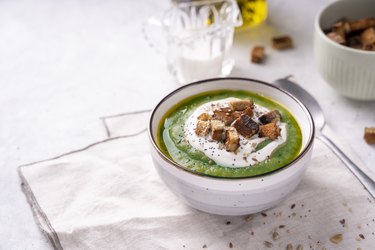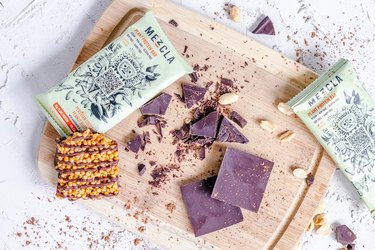Chicken breast is one of the most popular lean protein choices. It’s versatile, easy to cook, and nutritious. But when managing your diet or counting calories, the key question is – how many calories are actually in a typical half breast portion? In this in-depth article, we’ll examine the calorie content of half a chicken breast and the factors that influence it.
Why Chicken Breast is a Lean Protein Superstar
Chicken breast has long been a staple for health-conscious eaters. Compared to fattier cuts of poultry and red meat, it provides an impressive nutritional profile:
-
High in protein – A 100g serving contains 31g of protein. Protein is essential for building and repairing muscles and tissues.
-
Low in fat – Chicken breast is a lean source of protein. A skinless, boneless half breast contains only around 4-8g of fat.
-
Packed with nutrients – It provides niacin, selenium, phosphorus, and B6. These support energy levels, immunity, thyroid function, and red blood cell production.
With all these benefits, it’s easy to see why chicken breast is a MVP for anyone looking to eat healthier and manage their weight But to truly unlock its potential, we need to look at calories
Calculating Calories in Half a Chicken Breast
So how many calories are actually in half of a chicken breast? Here are the key factors that determine the final calorie count
Size Matters
Perhaps the most significant factor is simply the size of the breast. Larger breasts that weigh more will have more calories:
- A small breast half weighing ~3oz (85g) has around 120 calories
- A medium half breast at 5oz (140g) contains roughly 165 calories
- A large half breast weighing 6-7oz (170-200g) can have 190-220 calories
To get an accurate calorie count weighing the raw chicken is ideal. If that’s not possible use visual cues and compare to the sizes above.
Cooked vs Raw
Calorie counts are typically given for cooked chicken breast. Remember that raw chicken loses moisture during cooking. A 6oz raw breast half may yield only about 4-5oz cooked.
Skin On or Off
This is a big one. The skin contains a significant amount of fat. A skinless half breast has roughly half the calories of a skin-on portion:
- Skinless: 110-170 calories
- With skin: 160-250 calories
When possible, remove the skin before eating to slash calories without sacrificing flavor and juiciness.
Cooking Method Matters
How you cook chicken breast also influences its calorie content:
-
Grilling, baking, broiling – These dry heat methods add minimal calories if cooked without added fats.
-
Frying or breading – Frying chicken breast substantially increases the calorie count. Even using “healthy” oils adds calories.
-
Poaching or steaming – Simmering chicken breast in liquid or steam doesn’t require any added fat. Great low-cal cooking options.
Marinades and Sauces
Marinades, rubs, and sauces introduce more variables. Some marinades are loaded with oil, sugar, or other calorie-dense ingredients. Opt for lighter marinades based on herbs, spices, vinegar, citrus, mustard, etc.
Likewise, creamy pan sauces can pile on extra calories. Keep sauces light or use sparingly.
Healthy Serving Tips
Here are some tips for enjoying chicken breast as part of a healthy, calorie-conscious diet:
-
Remove the skin before cooking to slash calories without sacrificing flavor.
-
Use lower-cal cooking methods like grilling, baking, broiling or poaching. Avoid frying.
-
Weigh raw portions to determine true calorie counts based on the size charts provided.
-
Use fresh herbs, spices, vinegars, citrus juice, mustard, etc. to add flavor without adding many calories.
-
Pair chicken breast with plenty of non-starchy vegetables, leafy greens, beans, whole grains and other fiber-rich sides.
-
Watch your portions and stick to a palm-sized serving of 3-5oz cooked chicken breast at a time.
The Bottom Line
Half of a chicken breast contains anywhere from 110 to 220 calories, depending on its size and preparation method. Choosing skinless, boneless portions and using healthy cooking techniques are the best ways to keep calories in check. Combined with nutritious plant foods and controlled portions, chicken breast can be part of an effective weight loss plan or calorie-controlled diet.
So go ahead and enjoy this lean, protein-packed poultry! Just be mindful of serving sizes, and preparation methods to keep calories under control. With the right approach, chicken breast can be a nutritious addition to your diet.

Good Source of Protein
Video of the Day
Chicken is a good source of protein, which is one of the most important macronutrients you need in your diet. Its a vital building block for muscle, hair, skin and cartilage. The yield from the meat of half a roasted chicken with skin — about 10 ounces or 285 grams — supplies 68 grams of protein. The recommended daily intake of protein for adult women is 46 grams; for men its 56 grams, according to Dietary Guidelines for Americans. Eating half a chicken would supply all of your daily requirements for protein.



Video of the Day
Calories in Half a Chicken
If you ate half a chicken, you would consume 636 calories. Dietary Guidelines estimates a daily intake ranging from 1,600 to 2,400 calories for adult women and 2,000 to 3,000 calories for adult men, depending on age and level of activity. To decrease the calories in half a chicken, remove the skin and youll lower the calorie count to 476.
If youre restricting your calories, opt for white chicken meat over dark. For comparison, 100 grams of white meat contains 153 calories compared to 178 in dark meat for the same amount.
How Many Calories Are in Chicken Breast
FAQ
How many calories in a half a chicken breast?
How many calories are in half a whole chicken breast?
There are 23 grams of protein in each serving of Foster Farms Simply Raised Chicken Breast. Each serving is 4oz, 112 grams. How many calories in one half chicken breast? There are 180 calories in each serving of Foster Farms Simply Raised Chicken Breast.
Is half a chicken breast enough protein?
Protein Content: Boiled chicken breast contains about 31 grams of protein per 100 grams. Therefore, 500 grams would provide approximately 155 grams of protein, which is more than sufficient for most individuals, particularly if you’re engaging in regular strength training like push-ups.
How many calories are in 1 average chicken breast?
In a 3.5-oz serving of cooked boneless and skinless chicken breast, a person is consuming about 165 calories. They are also getting: 31 grams (g) of protein.Oct 23, 2019
How many calories are in half a chicken breast?
When cooked, a raw chicken breast has 330 calories, while when cooked, it has 164 calories. There are 220 calories in 2 servings of bone-in skinless split halves chicken breasts, with 4g of carbs, 2g of fat, and 48g of protein. In summary, the number of calories in half a chicken breast depends on the size and whether the skin is eaten or not.
How much protein is in half a chicken breast?
Half a chicken breast contains approximately 24-27 grams of protein. 3. How does the cooking method affect the calorie content? The cooking method can affect the calorie content of chicken breast.
How many calories are in a 1/2 large chicken breast?
There are 216 calories in a 1/2 large Chicken Breast. Calorie breakdown: 37% fat, 0% carbs, 63% protein. There are 216 calories in a 1/2 large Chicken Breast. Get full nutrition facts and other common serving sizes of Chicken Breast including 1 oz of raw and 1 oz of boneless.
How many calories are in a roasted chicken breast?
For a 1/2 large chicken breast, there are 216 calories, while for a 1/2 small chicken breast with skin not eaten, there are 123 calories. A 1/2 serving of skinless chicken breast contains 50 calories. On average, a roasted, bone-in, skin-on half chicken serving contains approximately 421 calories.
How many calories are in skinless chicken breast?
A 1/2 serving of skinless chicken breast contains 50 calories. On average, a roasted, bone-in, skin-on half chicken serving contains approximately 421 calories. A 3-ounce serving of boneless, skinless chicken breast contains approximately 110 calories.
How much protein is in a boneless chicken breast?
One 3.5-ounce serving of boneless, skinless chicken breast contains about 160 calories and 32 grams of protein. That’s almost half the recommended daily amount for the average 185-pound adult. (Some research suggests that people who do regular strength or endurance training may benefit from consuming more protein per day.)
